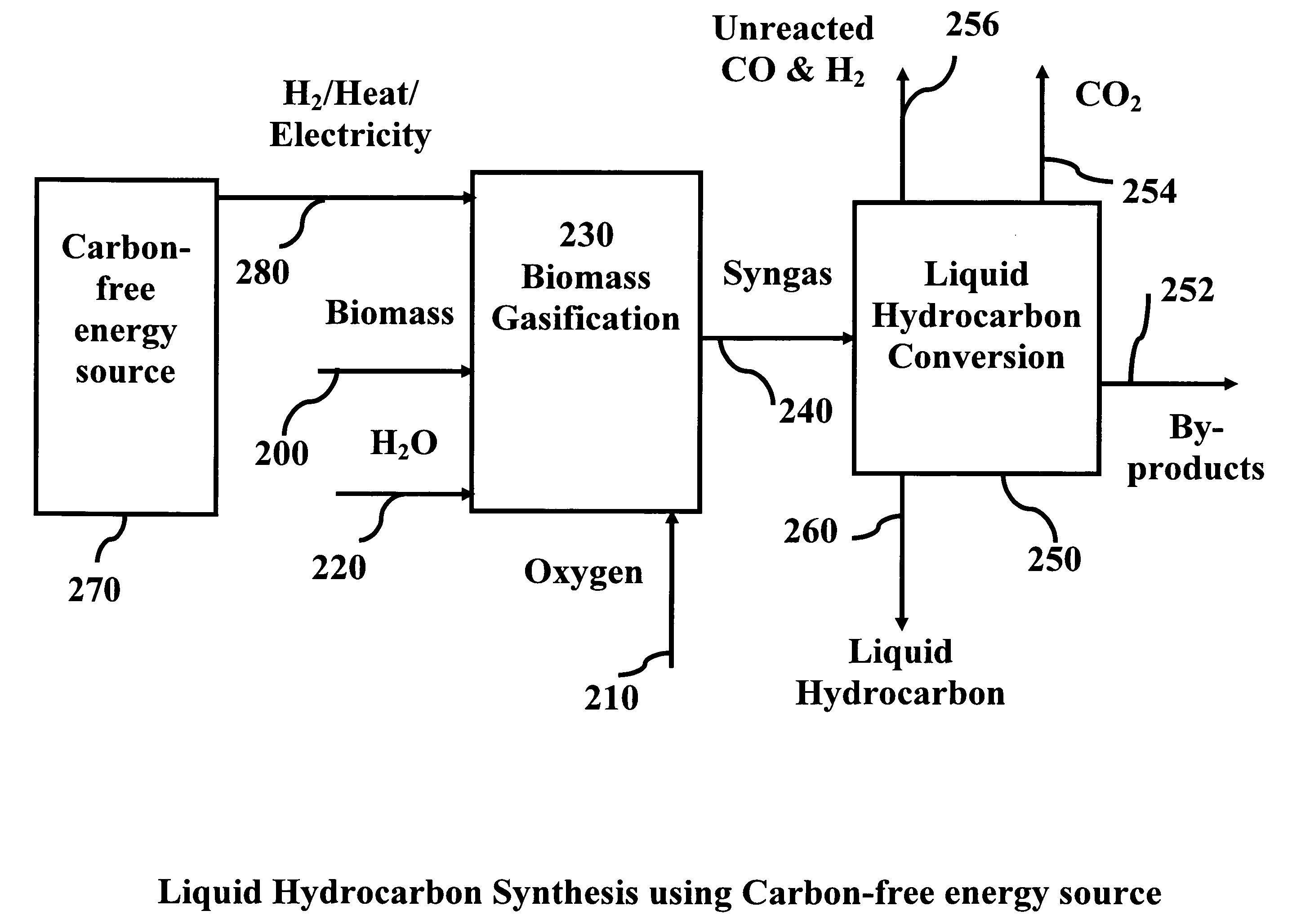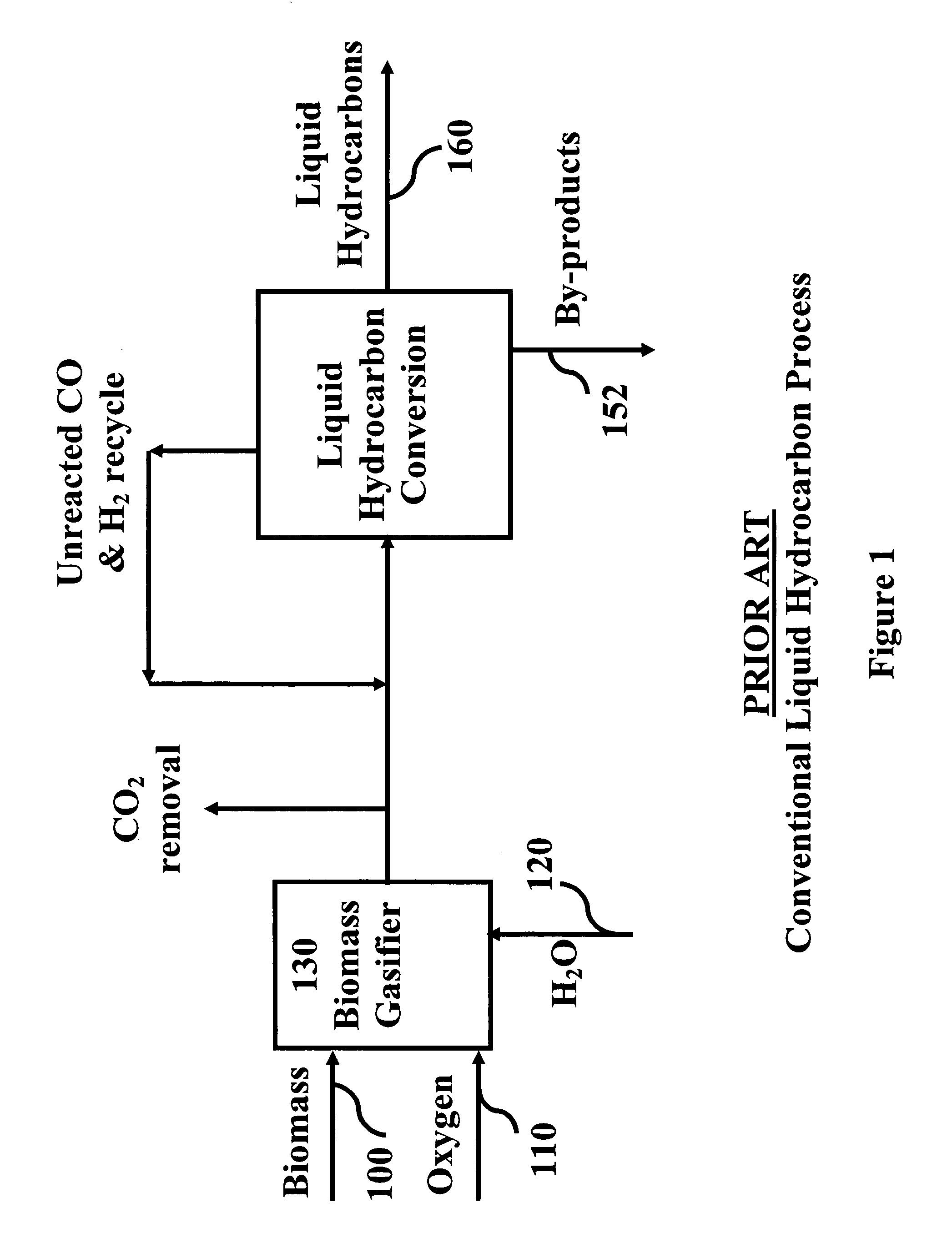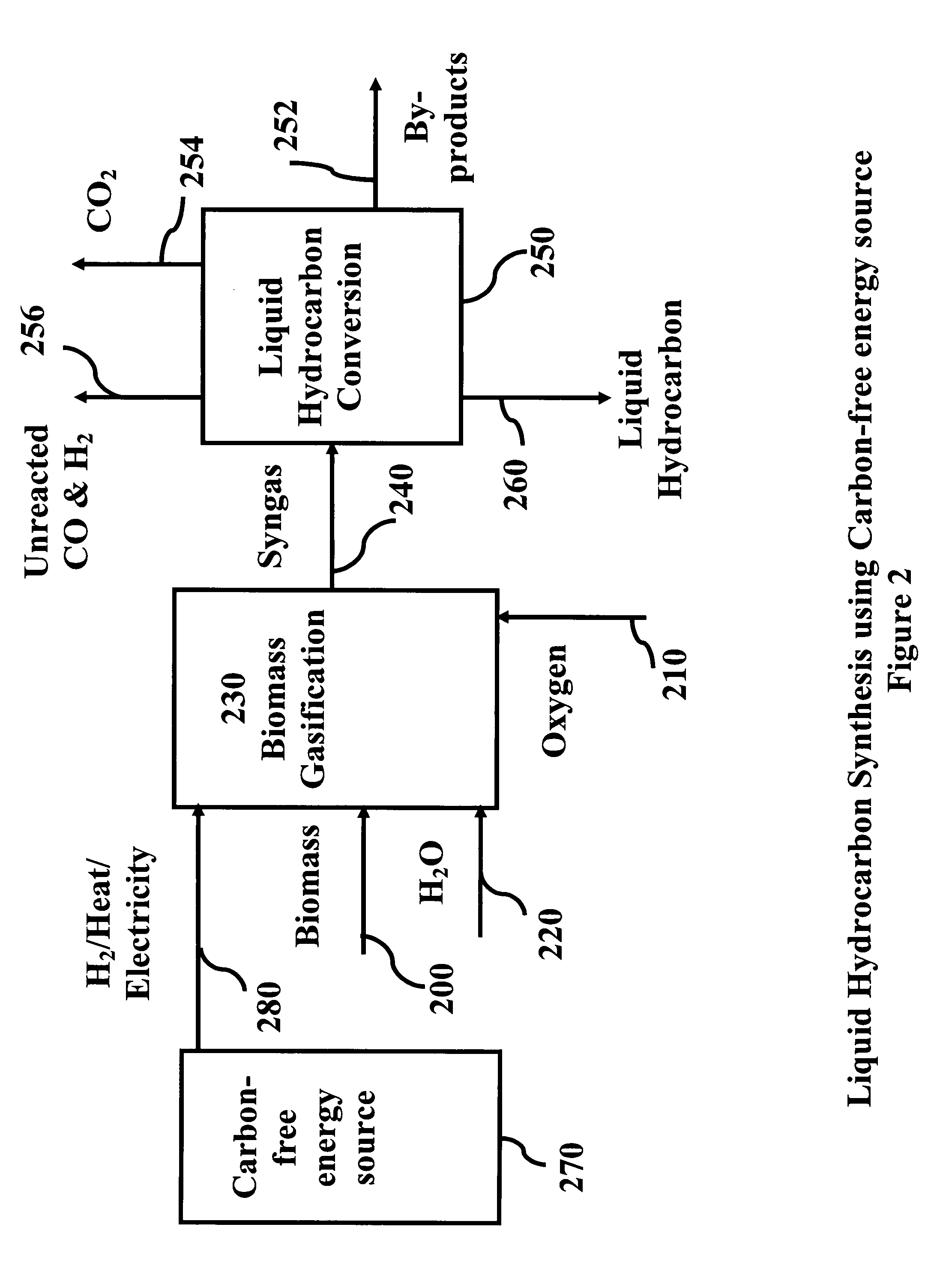System and process for producing synthetic liquid hydrocarbon
a liquid hydrocarbon and process technology, applied in the direction of gaseous fuels, combustible gas purification/modification, combustible gas production, etc., can solve the problem that none of the routes can come up with manageable land area requirements, and achieve the reduction of land area requirements, high carbon efficiency, and the effect of reducing the land area required
- Summary
- Abstract
- Description
- Claims
- Application Information
AI Technical Summary
Benefits of technology
Problems solved by technology
Method used
Image
Examples
example 1
[0066]For this purpose, the numbers for the amount of syngas production from biomass gasification provided in the recent National Research Council's report on H2 were used. The efficiency of the gasifier using current technologies is 50%. The report uses a biomass having growth rate of 10 tons / hectare / yr and Higher Heating Value (HHV) of 8000 BTU / lb. Conversion of syngas to the desired liquid hydrocarbon at 100% efficiency is assumed and the desired liquid hydrocarbon is diesel, represented as C15H32. Gasifier exhaust is assumed at thermodynamic equilibrium and CO2 exiting the gasifier and FT reactor is recycled to the gasifier. Hydrogen from a carbon-free energy source is used to convert all the carbon to the desired diesel molecule. In the report, 15% of the biomass is combusted to dry the remainder of the biomass.
[0067]Using conventional processes for the production of 13.84 million barrels per day which is the current consumption rate of oil of the U.S. transportation sector wil...
example 2
[0069]The significance of the invention can be realized by the amount of coal required for the current as well as proposed processes. For this purpose, the numbers for the amount of syngas production from coal gasification provided in the recent National Research Council's report on H2 were used. The efficiency of the gasifier using current technologies is 75% and Higher Heating Value (HHV) of 12000 BTU / lb. Conversion of syngas to the desired liquid hydrocarbon at 100% efficiency is assumed and the desired liquid hydrocarbon is diesel, represented as C15H32. Gasifier exhaust is assumed at thermodynamic equilibrium and CO2 exiting the gasifier and FT reactor is recycled to the gasifier. Hydrogen from a carbon-free energy source is used to convert all the carbon to the desired diesel molecule.
[0070]Using conventional processes for the production of 13.84 million barrels per day, which is the current consumption rate of oil for the U.S. transportation sector, will require about 2 billi...
PUM
 Login to View More
Login to View More Abstract
Description
Claims
Application Information
 Login to View More
Login to View More - R&D
- Intellectual Property
- Life Sciences
- Materials
- Tech Scout
- Unparalleled Data Quality
- Higher Quality Content
- 60% Fewer Hallucinations
Browse by: Latest US Patents, China's latest patents, Technical Efficacy Thesaurus, Application Domain, Technology Topic, Popular Technical Reports.
© 2025 PatSnap. All rights reserved.Legal|Privacy policy|Modern Slavery Act Transparency Statement|Sitemap|About US| Contact US: help@patsnap.com



